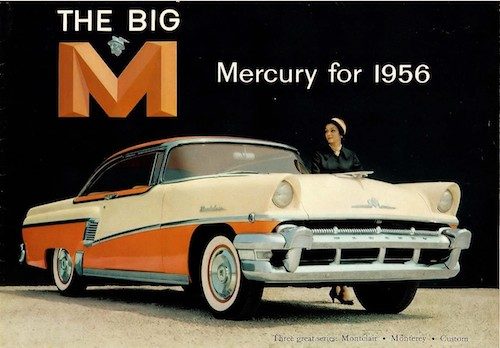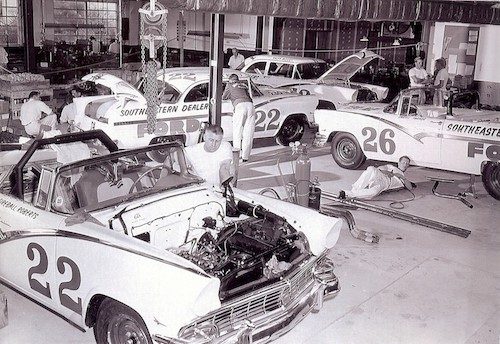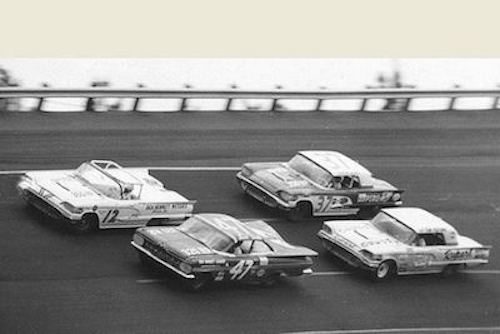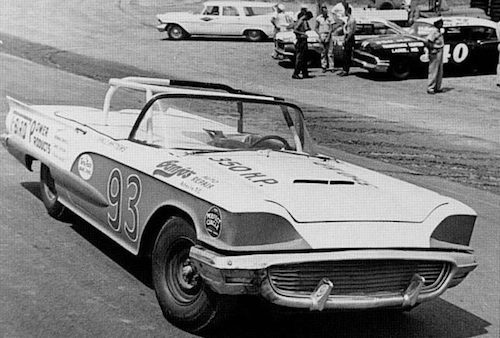By Greg Zyla
During my “Top 10 Muscle Cars of All Time” series, many readers wondered why cars from that 1950-decade didn’t make the list. With a few exceptions, it wasn’t until the 1960s when car manufacturers bought into what would turn out to be the muscle car era lock, stock, and barrel.
Still, here are a few reader questions that emphasize more the styling of the car instead of all out performance, with both sides of the coin being explained as we move along this week.
Non-performance upgrades
Q: Greg, when it comes to designers, were the cars of the Fifties, compared to those from other decades, ahead of the curve? These cars from the Fifties really changed their looks year to year, while today a model might not change for three or more years. — Clint, an “Auto Roundup Magazine” old timer from the state of Washington.
A: Clint, taking everything into consideration, you are correct in your assumption. Additionally, those 1950s cars were as close to “beauty is only skin deep” as one gets, because when it came to the actual design update, the word “mechanical” wasn’t in the new car formula.

After some 14 years, Larry Tanzer from Idaho tells us about the charging systems on the 1956 Mercury versus the 1955 Mercury. The attached ad shows how good looking the 1956 Mercury was. (Ford)
As an example, and taking 1957-58-59 as case in point years, Chrysler led the way with its “forward look” cars and all three years resulted in the manufacturers producing cars that looked nothing like the prior years. Chevy, too, is a good example in 57-58-59, as is Buick in those identical years.
I really gotta love the ’58 Chevy, although bulky and overweight compared to the ’56 and ’57 models. I’d love to own a ’58 Impala with a 348-V8 Tri-Power under the hood. (This ’58 Chevy mention is for my friends at the former Kaminski Automotive in Elysburg, Pa.)
Chrysler made huge design changes from ’54 through ‘57, while over at Ford the big change years came in 1957 to ‘59, in my opinion.
Independents like Studebaker is perhaps the best example of “re-skinned success”, as its poor selling 1958 model was re-skinned with a smaller Lark body for 59. This upgrade saved the company, although there were few mechanical differences between the ‘58 Studebaker and the ‘59 Lark.

This photo shows the inner workings of the Holman Moody race car shop back in 1956. Holman Moody is still in business to this day and built some of the most famous Ford race cars of all time. (Lee Holman collection)
Of all the cars from the 1950s, the ’55 and ‘56 Mercury designs were some of my favorites. Speaking of these ’55 and ’56 Mercury’s, I’m taking this opportunity to both embarrass myself and correct a column written years ago thanks to a reader from Spokane, Washington.
’55 and ’56 Mercury corrections – 14 years later
Q: Greg, I enjoy reading your column when it appears in our local paper, the Spokesman-Review in Spokane, Wash.
Since my father was a Lincoln-Mercury dealer at the time, I particularly enjoyed your column covering the 1955 and 1956 Mercury’s. However, at the risk of being overly nit-picky, I did find a couple of errors in the information presented.
1) True, the 1955 models had a 6-volt, positive ground electrical system, using a (DC) generator. And true, the 1956 model went to a 12-volt, negative ground system. However, 1956 still used a (DC) generator, not an (AC) alternator. The alternator did not come into common usage on domestic vehicles until several years later in the early 60’s.
2) The quoted horsepower ratings of 288 and 298, for the 292 cubic inch engine in 1955 are about 100 horsepower too high. As I recall, the figures would have been about 188 and 198, respectively. I also recall the ratings for the 312 cubic inch engine in the 1956 models were about 215 and 225. I still have service manuals for those model years.
Regardless, thank you for an article that brought back many fond memories. Larry Tanzer, Spirit Lake, Idaho.
A: Thanks Larry. As I promised years ago, I would get your letter in my column when I mentioned the ’55 and ’56 Mercury again. Unfortunately, that letter you sent me just surfaced again in my “unanswered but good questions” file from (I hate to say this) April 12, 2009. My sincerest apologies for this ultra-ultra-tardy reply. What’s good is that The Spokesman Review still runs my column in its digital edition! As for the horsepower error, no excuses.
So, you’re all wondering if Larry is still around? Of course, he is alive and well and I spoke to him and his wife on the phone Dec. 21 letting him know I am running his letter in this column, and we all had a good laugh. Larry is now 82 years old, and still a car-loving enthusiast.

Action on the high banks of Daytona back in 1959 features three Holman Moody ’59 Thunderbirds, including one zipper-top convertible No. 12 driven by Ralph Moody himself. Also shown are the 37 driven by Eduardo Dibos from Peru, a 1959 Chevrolet driven by Emanuel Zervakis (47), and Thunderbird 59 driven by Tom Pistone. (NASCAR)
The ‘performance side’ of the 1950 decade
With due respect to the Chevrolet and Chrysler 1955 and forward major performance efforts, here’s a letter and answer that shows how serious the manufacturers were in gearing up for a major assault in both NASCAR and USAC stock car racing and the numerous classes of drag racing as the sport began to boom.
Q: Greg, I’m an avid “old-timer” fan of NASCAR and have followed the sport since the very first Daytona 500, and even earlier on the beach course. Do you recall the famous NASCAR Thunderbirds from back then, both hardtops and convertibles? Weren’t they available from Ford Motor Company ready to race? Thanks, Bud L., Detroit, Michigan.
A: Bud, those 1959 race ready Thunderbirds were available, but not directly from the Ford company dealers. The legendary team of Holman Moody was responsible for building the first race ready Fords; and they built them well.
I’m sure you remember that first Daytona 500, where Johnny Beauchamp, in one of the Holman Moody Thunderbirds, nearly won the race against Lee Petty in his Oldsmobile?
As you recall, the finish in 1959 at Daytona was a near dead heat, and it took three days for Petty to be declared the winner after Beauchamp was originally flagged as the winner.
I contacted Lee Holman, son of the great founder, for this answer to make sure I get everything right. Thus, the story of Holman and Moody starts earlier as in 1957, John Holman and Ralph Moody put their heads together and formed the soon to be famous Ford race car building company, Holman Moody. The business was in a hangar at the Charlotte Airport business complex and with Ford’s blessing (but not yet full factory support) it saw Holman Moody Fords win its first races in 1957.
By 1958 those beautiful Thunderbirds went from a 2-seat sports car to a 4-passenger design, making them legal for NASCAR racing. These new T-Birds were on the building jig immediately, but still a year away from the track. However, the full-size Holman Moody 1958 Fords were entered in the last convertible race on the Daytona Beach Course, where good friends Curtis Turner and Joe Weatherly raced to a win and a third, respectively. (The video is on YouTube if interested.)
Also, 1958 is the year Ford gave its factory support to the team. That’s where you remember (as I do) seeing ads for those Holman Moody race ready 1959 Thunderbirds. This corporate backing found Holman Moody building what Lee Holman remembers as a “dozen or so” 1959 Thunderbirds, all having the capacity of removing the top to compete in the convertible races and called “zipper top” T-Birds.
With five of seven Thunderbirds in the 1959 Daytona 500 built by Holman Moody, that race is still talked about to this day. Beauchamp and Petty averaged 135.521 mph for the entire 500 miles, as there was not one yellow flag!
In summary, of all the cars produced, Thunderbirds were indeed special, and I believe all those older T-Birds from the 1950s are great vehicles to own.
Give Holman Moody a call at (704) 583-2888 for information on ordering anything from a full-size, real racecar to official Holman Moody engine race parts, special grind Ford cams, nostalgia style t-shirts or beautiful diecast collectibles. All is visible on their new website at www.holmanmoody.net. Yes, they are still in business at Holman Automotive, 9119 Forsyth Pike Dr., Charlotte, N.C. 28273.
(Greg Zyla is a syndicated auto columnist who welcomes reader interaction on auto nostalgia, motorsports, or collector cars at greg@gregzyla.com.)



Be the first to comment on "Collector Car Corner; ‘Beauty only skin deep’ with cars from the 1950s, Holman Moody revisited and a letter from 14 years ago"